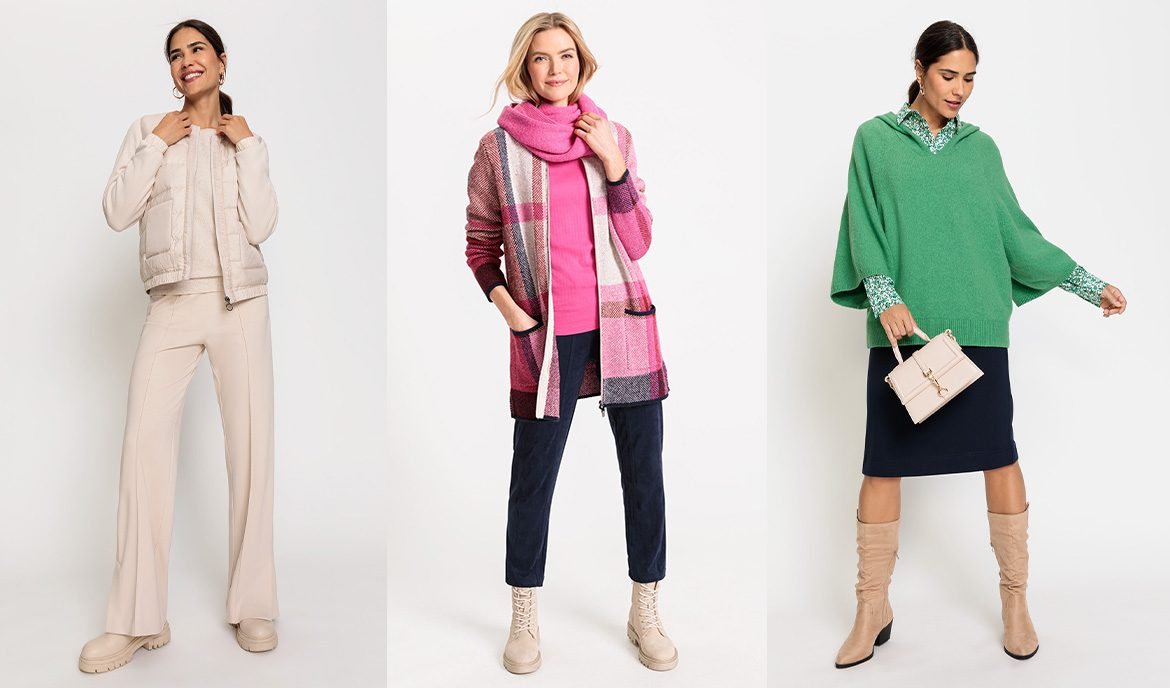Introduction
Fall asks for flexibility. Mornings can be chilly. Afternoons may warm up. Layering solves that. It keeps you comfortable and stylish all day. This article explains clear steps to layer like a pro. You will learn the three-layer system, fabric picks, color ideas, and outfit formulas. Real-life examples show how to combine pieces. I include practical tips for packing and quick fixes for common layering problems. Every paragraph here stays concise and helpful. You will leave with actionable ideas you can wear tomorrow. The main keyword How To Dress This Fall – Stylish Tips For Layering appears naturally throughout. Read on to build a fall wardrobe that works, feels good, and ages well.
Why layering matters this fall
Layering is a simple skill that changes your wardrobe instantly. It helps you handle temperature swings. It also adds visual depth to outfits. A good layered look looks thoughtful, not bulky. Start with slim, breathable base pieces. Add a mid layer for warmth. Finish with an outer layer for wind or rain. Each layer should serve a clear purpose. Choose fitted pieces close to the body. Pick one more relaxed layer for comfort. Mixing textures like knit, leather, and wool gives interest. Layering also saves money. You can mix older favorites with new statement pieces. Finally, layering boosts confidence. When you know how to adjust layers, you feel prepared. That small comfort makes a big style difference.
The three-layer system: simple formula you can follow
The three-layer system is easy and practical. Layer one is the base. Think cotton tee, thin long-sleeve, or light shirt. Layer two is the mid layer. Choose sweaters, cardigans, or light jackets. Layer three is the outer layer. Use trench coats, wool coats, or packable puffers. Each layer should fit the next. Shoulders must sit right under coats. Avoid heavy knits that create bulk. Prefer merino or thin cashmere for warmth without weight. For very cold days, add a thin thermal or vest between layers. Keep color and proportion in mind. Use this system daily for effortless outfits. It works for casual, office, and evening looks.
Best fabrics, textures, and color choices for fall
Pick fabrics that balance warmth and breathability. Cotton and modal work well for base layers. Merino wool and thin cashmere are top mid-layer picks. Wool blends and water-resistant fabrics make good outerwear. Add texture with corduroy, suede, and brushed cotton. Texture creates a richer, autumnal feel. For colors, start neutral: black, gray, cream, navy, and beige. Add one or two accent colors like rust, olive, or mustard. Patterns like plaid or subtle stripes can animate a neutral outfit. Keep contrasts intentional. A neutral base with a single warm accent reads polished. When unsure, mirror nature’s palette deep greens, browns, and warm reds blend easily.
Outfit formulas and real-life examples
Use simple formulas to build outfits fast. Casual formula: tee + denim jacket + quilted vest + jeans + sneakers. Office formula: button-down + thin sweater + tailored coat + trousers + loafers. Evening formula: silk blouse + blazer + long wool coat + slim jeans + heeled boots. Example: for a Saturday coffee run, wear a white tee, olive cardigan, cropped leather jacket, and ankle boots. Add a scarf if morning feels crisp. Another example: for a client meeting, layer a pale blue shirt under a charcoal merino sweater and top with a camel coat. These quick formulas remove decision fatigue. Keep a few go-to combinations you love. Over time you build a capsule of reliable outfits.
Practical tips, packing list, and maintenance
Prepare for changeable weather with a small kit. Carry a lightweight scarf, a thin packable sweater, and a compact umbrella. Choose one quality coat and two versatile mid layers. For shoes, pick waterproof ankle boots and neutral sneakers. When packing, roll thin layers to save space. Repair small snags promptly to extend garment life. Store wool pieces clean and dry in breathable bags. Rotate shoes to increase lifespan. For seasonal refresh, buy one statement piece each year. Quality over quantity follows EEAT principles: invest in trusted brands and learn proper care. These habits keep your layers looking sharp and lasting longer.
Conclusion
Layering is a practical skill anyone can master. Use the three-layer system as your baseline. Pick fabrics that match function and comfort. Keep colors simple and add one accent color. Use outfit formulas to remove stress from mornings. Carry a small weather kit for unpredictable days. With these tips you will feel warm, stylish, and confident this fall. Start with one versatile coat and one excellent mid layer. The rest you can build around those pieces. Try one new layered outfit this week and see how it changes your comfort and style.
FAQs (Optimized for featured snippets)
1. What are the three layers for fall dressing?
Base layer (thin tee or shirt), mid layer (sweater or cardigan), outer layer (coat or jacket).
2. How do I layer without looking bulky?
Choose slim base pieces. Use lightweight insulation like merino. Balance proportions with one fitted and one relaxed layer.
3. Which fabrics are best for fall layers?
Cotton for base layers, merino or cashmere for mid layers, and wool blends or treated fabrics for outerwear.
4. Can summer clothes work in fall?
Yes. Add tights under skirts, long-sleeve tops under dresses, and pair with boots and a cardigan.
5. What colors work best for autumn layering?
Start with neutrals: black, navy, gray, beige. Add accent colors like rust, olive, mustard, or burgundy.
6. What should I pack for an unpredictable fall day?
Light scarf, foldable sweater, compact umbrella, and a packable puffer or vest.
